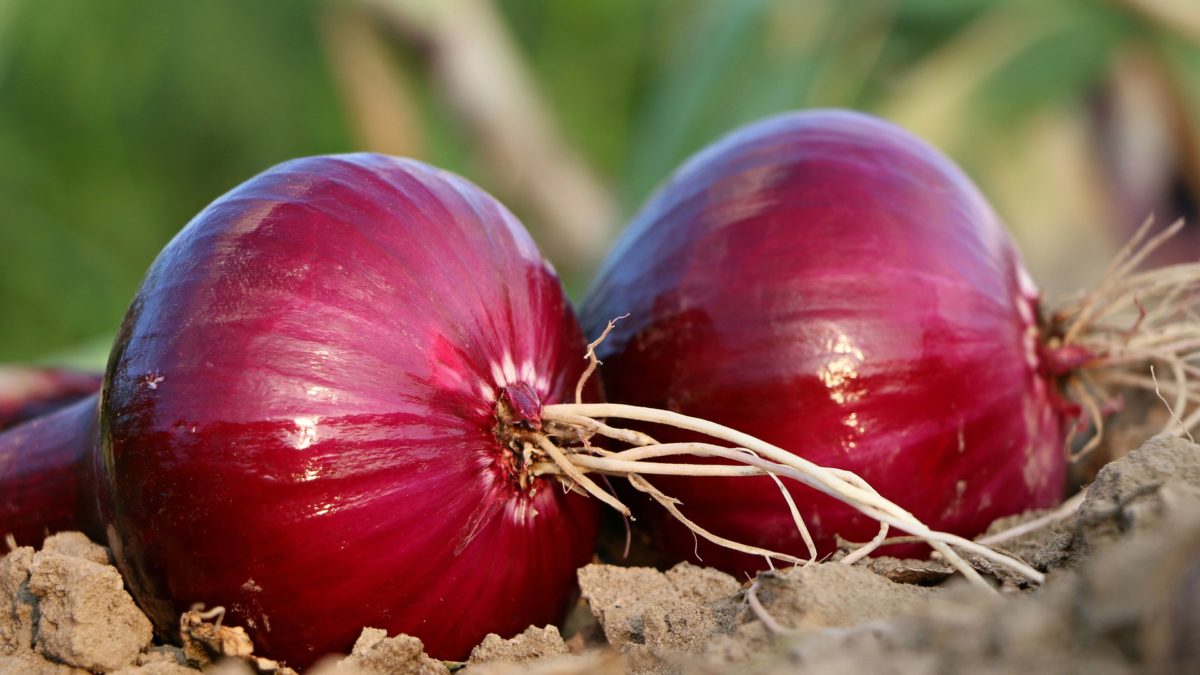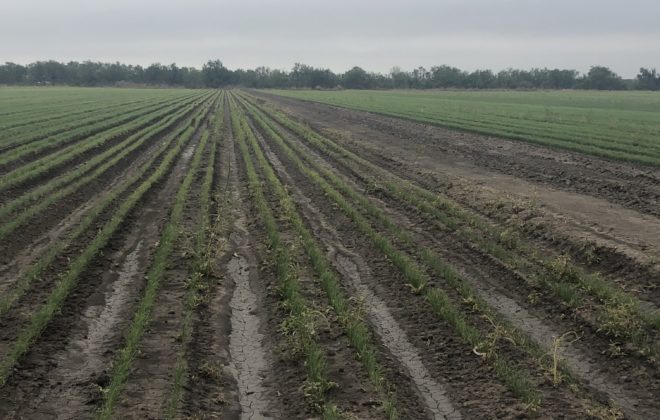Checkbook Method to Watering Onions
Onion watering, finding the right balance
Onions are highly sensitive to underwatering and overwatering. Research has shown that a single episode of moderate water stress any time from the four-leaf stage to the eight-leaf stage can result in reduced bulb single-centeredness. With these facts in mind, it is tempting to err on the side of overwatering – however, overwatering can rot the crop, either in the field or on the shelf.
The checkbook method to watering your onions
Think of watering your onions like a checkbook. The soil is the bank account and water is either added or taken away. Rain and irrigation are deposits while water used by the crop and water evaporated from the soil through evapotranspiration are withdrawals. The goal with the Checkbook Method Watering Method is to estimate the amount of water in the crop root zone and prevent the crop from experiencing water stress.
Water depletion varies with the soil texture. Silt and clay are fine-textured soils and hold more water than coarse-textured soils such as sand. Sandy soils require more frequent irrigation. The amount of evapotranspiration (ET) is variable depending on the amount of solar radiation, wind, air temperature and humidity. ET data is often available from weather stations in specific production regions. Once you know how much you are losing to ET, you can resupply this loss with either irrigation or rainfall.
For most areas in the country, the daily forecasted ET range in the 0.35-0.45 range during the summer months (July-August) During the spring (May-June) the ET range will be much smaller in the 0.1-0.3 range. In the winter, the ET range can be extremely low in the 0.01-0.1 range. That is what needs to be replaced by watering. Here’s a link to Daily FRET (Forecast Reference EvapoTranspiration).

When to water your onions
Onions should be watered immediately after planting. During the first month after planting, water demand is fairly low. Onions are developing new roots and most these initial roots are shallow compared to other crops. Most of the roots are within the top 10″ of soil. Light, frequent irrigations should be applied.
During the second month of planting the root system of the onion begins to expand in to the top 20″ of the soil. As the onion grows, foliage becomes denser and leaf area increases, which leads to more transpiration and increased irrigation needs.
The bulbing stage in onion growing
During the bulbing stage, water demand gradually increases to fill the rings with water and complete the bulbing process. In addition, this usually equates to warmer weather when the ET will be at its highest. Frequent, heavy irrigations will be required until the bulbs reach the marketable size and the tops start to fall over. At that time, irrigation should cease to allow the crop to dry in the field and increase shelf life.
Have more questions about watering your onions? Contact Customer Service at (830) 876-2430 or email customerservice@dixondalefarms.com. We look forward to another season of providing the highest quality onion plants for you!





Hello, I’m in California. I’m a first time onion grower. I’m growing short day onions that I purchased from you. I planted the onions in a raise bed in November 2020. I notice that my onion leaves are leaning forward and not straight up and some are to the side. Is this normal??? . Should I be concerned? Please advice
You can email a picture of them to us to look over if you’d like. From what I can read, they may have a bit too much water. When they have too much water, the tops can get heavy and fall prematurely due to the weight of the water content.
Can I use corn gluten as a weed preventer? Can I sprinkle on ground after putting onion in the ground?
Yes, that will work a pre-emergent herbicide. That’s what in our Natural Weed and Feed product.